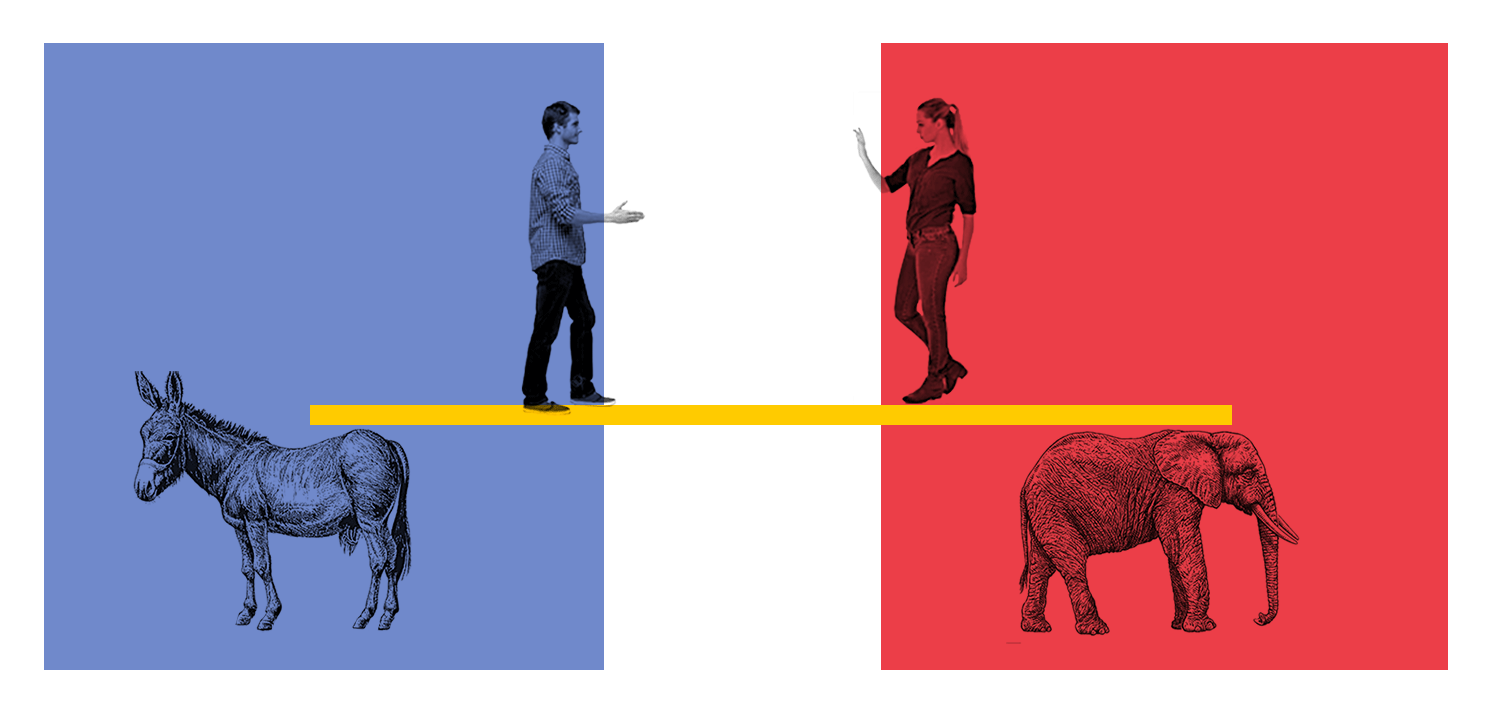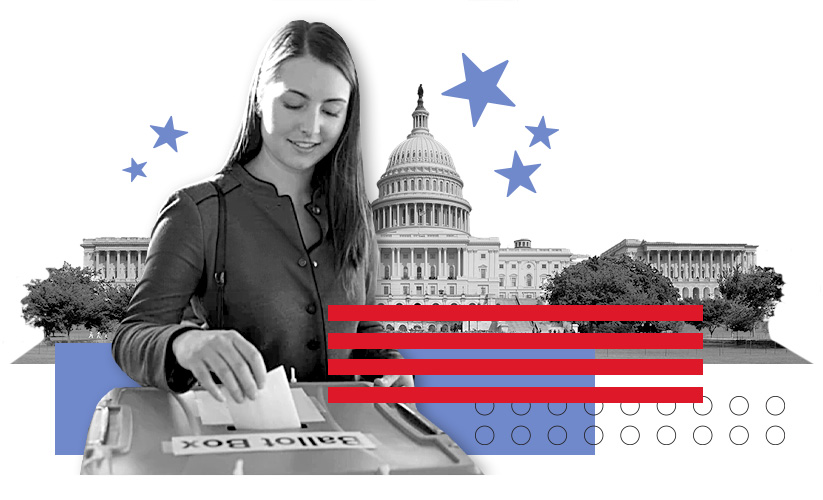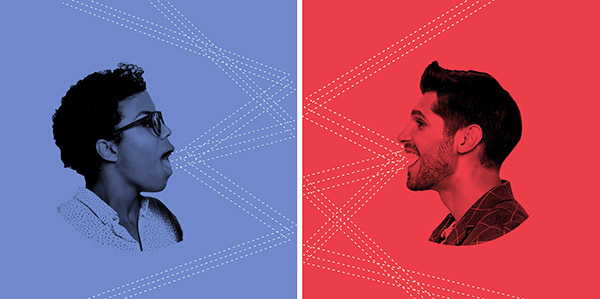Bridging the Divide

Differences of opinion no longer separate groups of people — they alienate us from each other. How can we heal this divide? By understanding the kinds of differences that exist and looking beyond the obvious for solutions. Red Rooster Group draws from various sources to understand the nuances and develop effective solutions. Here are some ideas that have informed our thinking.
Part 1: What is the Divide?
Tribalism: The Science Behind Us v. Them
From politics to everyday life, humans have a tendency to form social groups that are defined, in part, by how they differ from other groups. Oxytocin enhances the us v. them divide. Our brain processes us v. them in milliseconds. Trust is based on people who look like us.
It’s inevitable that we divide the world into us v. them, but we can also be manipulated into identifying who constitutes our tribe. Neuroendocrinologist Robert Sapolsky, author Dan Shapiro, and others explore the ways that tribalism functions in society, and discuss how—as social creatures — humans have evolved for bias.
Bias is not inherently bad. According to Beau Lotto, the key to seeing things differently is to “embody the fact” that everything is grounded in assumptions, identify those assumptions, and then question them. This video explains.
Automation Perpetuates the Red-blue Divide
In a March 2019 paper, “Automation perpetuates the red-blue divide,” Muro and his colleagues found that automation, as opposed to A.I., most hurts those who hold jobs that do not require college degrees, and that exposure to automation correlates with support for Trump.
Why Trump Still Has Millions of Americans in His Grip
“Social conservatives and white Christians” — have what Galston calls a “bill of particulars” against political and cultural liberalism.
- “They have a sense of displacement in a country they once dominated. Immigrants, minorities, non-Christians, even atheists have taken center stage, forcing them to the margins of American life.”
- “They believe we have a powerful desire for moral coercion. We tell them how to behave — and, worse, how to think. When they complain, we accuse them of racism and xenophobia.”
- “How, they ask, did standing up for the traditional family become racism? When did transgender bathrooms become a civil right?”
- “They believe we hold them in contempt.”
- “Finally, they think we are hypocrites. We claim to support free speech — until someone says something we don’t like. We claim to oppose violence — unless it serves a cause we approve of. We claim to defend the Constitution — except for the Second Amendment. We support tolerance, inclusion, and social justice — except for people like them.”
Conservative and Liberal Brains Might Have Some Real Differences
Scanners try to watch the red-blue divide play out underneath the skull. When 58 people with diverse political views were put into a brain scanner, this is what happened. The book “Predisposed” introduces political neuroscience, suggesting that ideological differences between conservatives and liberals are rooted in biological and personality factors. Research indicates conservatives generally seek security and predictability, while liberals are more open to novelty and complexity, with brain imaging studies showing structural differences that correlate with these tendencies. Despite these findings, political neuroscience also highlights the complexity of political behavior and the influence of partisanship on cognitive processes, suggesting a nuanced relationship between brain structure, political ideology, and behavior.
Many Differences between Liberals and Conservatives May Boil Down to One Belief
Conservatives tend to believe that strict divisions are an inherent part of life. Liberals do not.
New research by psychologist Nick Kerry and me at the University of Pennsylvania finds that the main difference between the left and the right is whether people believe the world is inherently hierarchical. Conservatives, our work shows, tend to believe more strongly than liberals in a hierarchical world, which is essentially the view that the universe is a place where the lines between categories or concepts matter. A clearer understanding of that difference could help society better bridge political divides.
How young voters feel about the presidential candidates and nation’s political divide
Part of “America at a Crossroads” series
Understanding What Swing Voters Think
Rich Thau, President of Engagious, runs focus groups with swing voters so you can hear exactly what they say on a range of issues — fascinating! Check out their YouTube channel for all the videos.
Part 2: Healing the Divide

Promoting Democracy
Strengthening our democracy and shoring up civic engagement is critical. Use our unique approach to advance your efforts on democracy, conduct get-out-the-vote and persuasion campaigns, as well as to revitalize your brand and promote your advocacy efforts for freedom and civil rights.
What do you need help with?
Developing a strategy?
Engaging your audiences?
Revitalizing your brand?
Raising more money?
Let’s Talk!
Whether you are looking to engage audiences, improve your brand, or raise money, we’re here to help you achieve your goals. We’re located in New York City and work with organizations across the United States and the world. Start the conversation.



